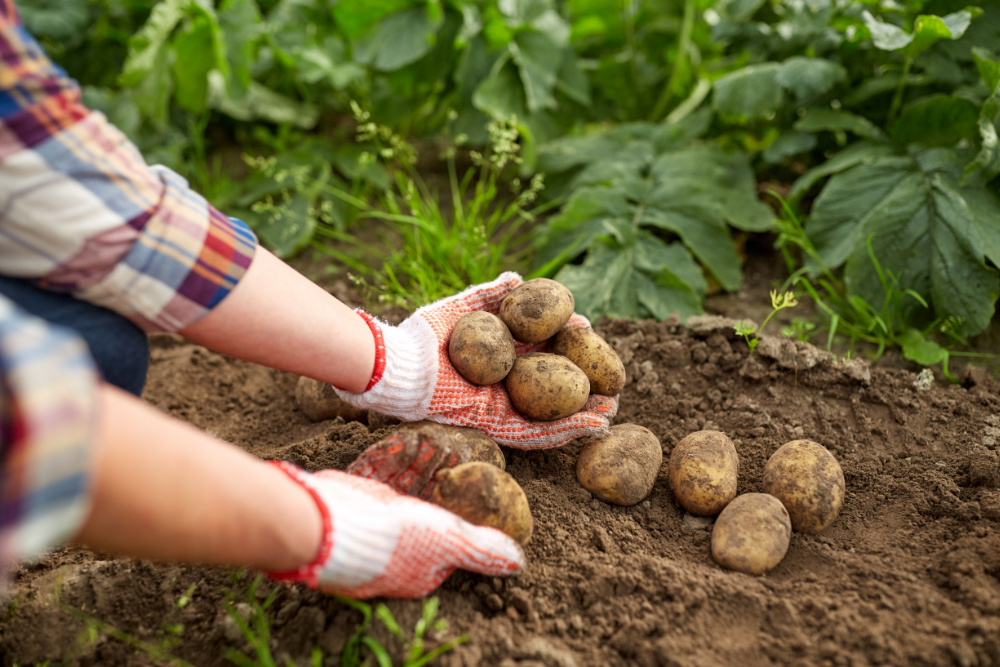
Plan 4 Year Crop Rotation in the Vegetable Garden: Advantages & Examples
If you're involved in growing vegetables in your own garden, then you've probably heard of crop rotation. But what does it actually mean and how does it differ from crop rotation? In this article, you will learn all about one of the most important tools in (organic) farming and how you can easily use it yourself.
This Article Contains:
- What Is Crop Rotation?
- Advantages of Crop Rotation: Planting Different Vegetables
- Plan a 4-Year Crop Rotation: Tips and Example
- Year 1: Planting and Fertilizing Heavy Feeders
- 2nd Year: Medium Feeder as Main Crop
- 3rd Year: Light Feeder as Main Crop
- Year 4: Sow Green Manure
- Crop Rotation & Succession Planting in Combination
- What Is Succession Planting?
- Create a Succession Plan
- Frequently Asked Questions About Crop Rotation
Quick Overview
Plan Crop Rotation
- Definition: Crop rotation means rotating different crops on the same bed over several years to avoid soil diseases and maintain soil fertility.
- You must take this into account:
- Crop breaks within the plant families to avoid diseases
- Rotate heavy, medium and light feeders in different beds to maintain the soil in the long term
- Green manure as a rest period for the bed
What Is Crop Rotation?
Crop rotation refers to the alternation of crops over several years . So if you grow peas next year in the bed where you grew potatoes and spinach this year.

Advantages of Crop Rotation: Planting Different Vegetables
Crop rotation is all about long-term plant hygiene and soil care. By growing different crops in successive years, you ensure that fungi, bacteria and viruses cannot spread as easily. Such pathogens are sometimes very specific to individual crops, but mostly to entire plant families. If you grow crops from the same family in the same place every year, the pathogens will stay there and continue to multiply. The same applies to nematodes (tiny worm-like parasites) and insect pests. In the long term, you will lose more and more of your plants to diseases and pests and therefore harvest less and less. However, good crop rotation can help you to avoid diseases.
Crop rotation is particularly important for soil care. Each crop has a specific nutrient profile that it takes from the soil. As with pests, plants of the same family are often similar. If you grow the same, closely related plants in the same area every year, the soil will be depleted to one side. This means that the plants will eventually have too little of one or more nutrients. This is a problem because plant growth can already be limited by the lack of one nutrient. For example, if there is a lack of potassium, you can have as much nitrogen and phosphate in the soil as you like, but your plants will not grow any better as a result. The aim is therefore to use the nutrient balance in the soil evenly so that it can always regenerate itself.
Plan a 4-Year Crop Rotation: Tips and Example
If you follow a well-planned crop rotation, it is usually sufficient to fertilize with a load of compost every three years. This can save you a lot of fertilizer and work. You can Find More Information on Organic Fertilization here. On a freshly fertilized bed, you grow a high-yielding crop in the first year, a medium-yielding crop in the second year and a low-yielding crop in the third year. In this way, the crops are staggered according to their nutrient requirements and no plant is neglected.
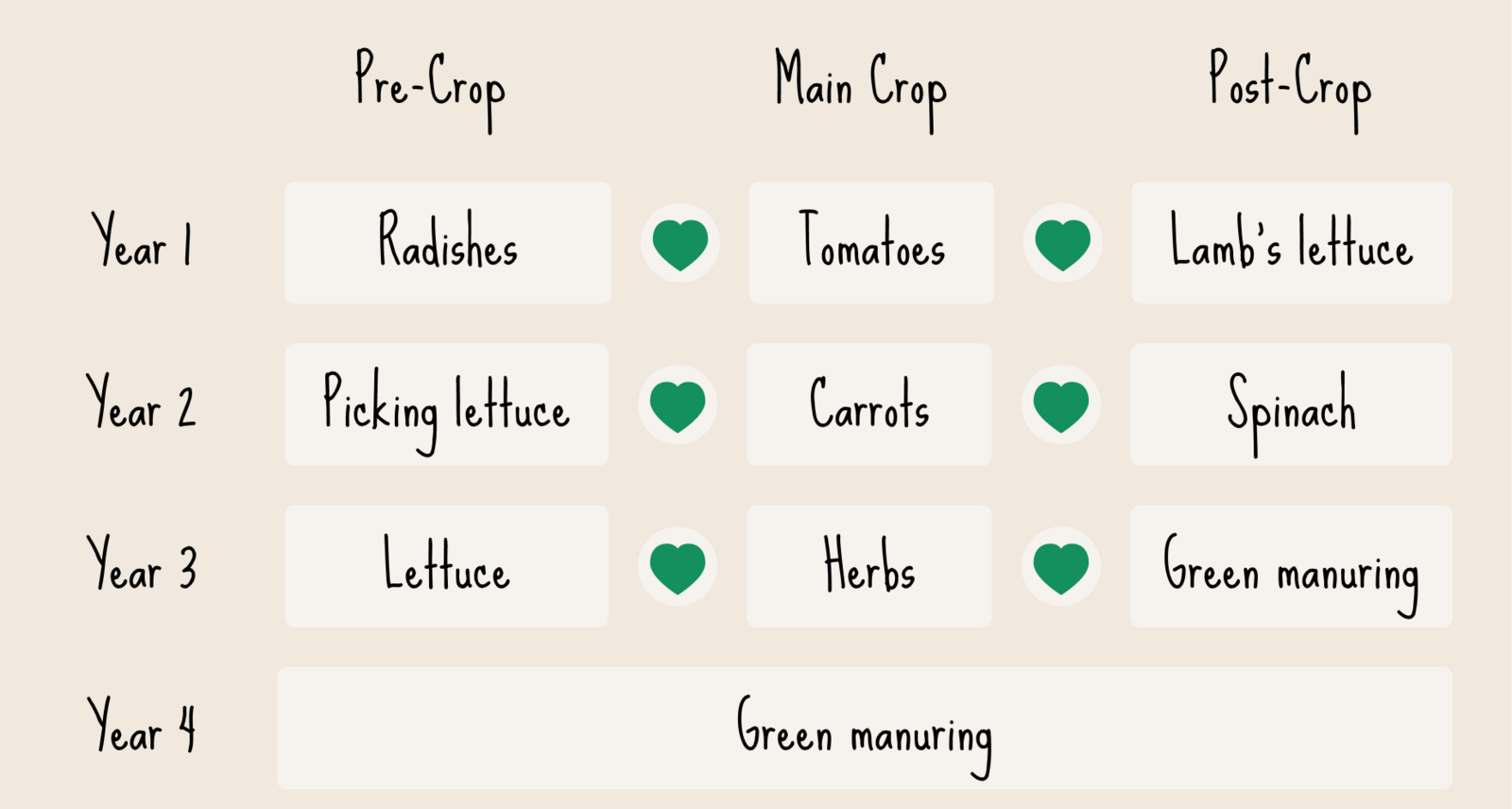
Year 1: Planting and Fertilizing Heavy Feeders
A bed that is at the beginning of the 4-year cycle should be fertilized with plenty of Compost and/or manure. It is best to do this a few weeks before planting so that the fertilizer has time to rot and release its nutrients into the soil. To add the compost to the bed, it is best to spread it evenly over the bed first. Depending on how much you have available and what your soil is like, you can apply up to 10 cm of compost. Then take a digging fork, prick the soil at regular intervals and make a circular motion to gently mix the compost with the top layer of soil and aerate the soil at the same time. After the bed has had time to rest a little, you can start planting your staple crops.
Heavy Feeders for the First Year of Cultivation
- solanaceous plants such as potatoes, peppers, tomatoes and eggplants
- various types of cabbage (e.g. red cabbage, Brussels sprouts, pointed cabbage, kale, broccoli, etc.)
- cucurbits such as pumpkins, zucchinis, melons and cucumbers
- leeks
- celery
- maize
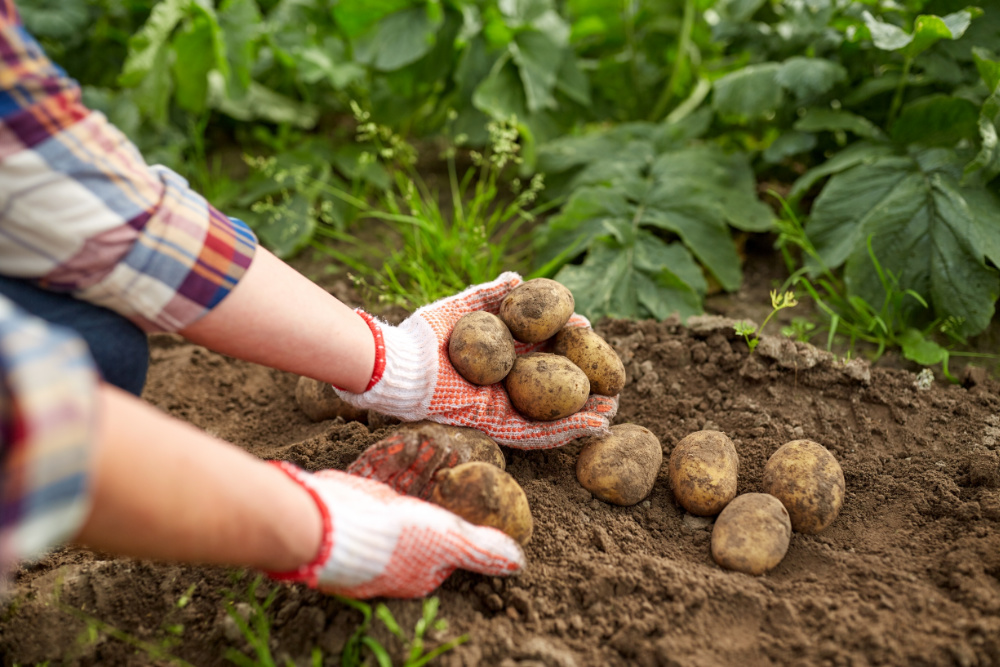
All these crops need a lot of nitrogen, phosphorus and potassium and should therefore only ever be grown on freshly fertilized beds to guarantee their health and a bountiful harvest. Once the main crop of the season (e.g. potatoes) has been harvested, you can easily grow undemanding leafy vegetables such as lettuce or rocket as a secondary crop.
2nd Year: Medium Feeder as Main Crop
In the second year, it is a good idea to grow plants with lower nutrient requirements, as the soil was already heavily stressed in the previous year. This will ensure that the fertility of your soil is maintained in the long term and, ideally, even increases.
These Medium Feeders Are Suitable:
- carrots, parsnips and fennel
- kohlrabi and radish
- beet and chard
- onions and garlic
- radicchio
- runner beans
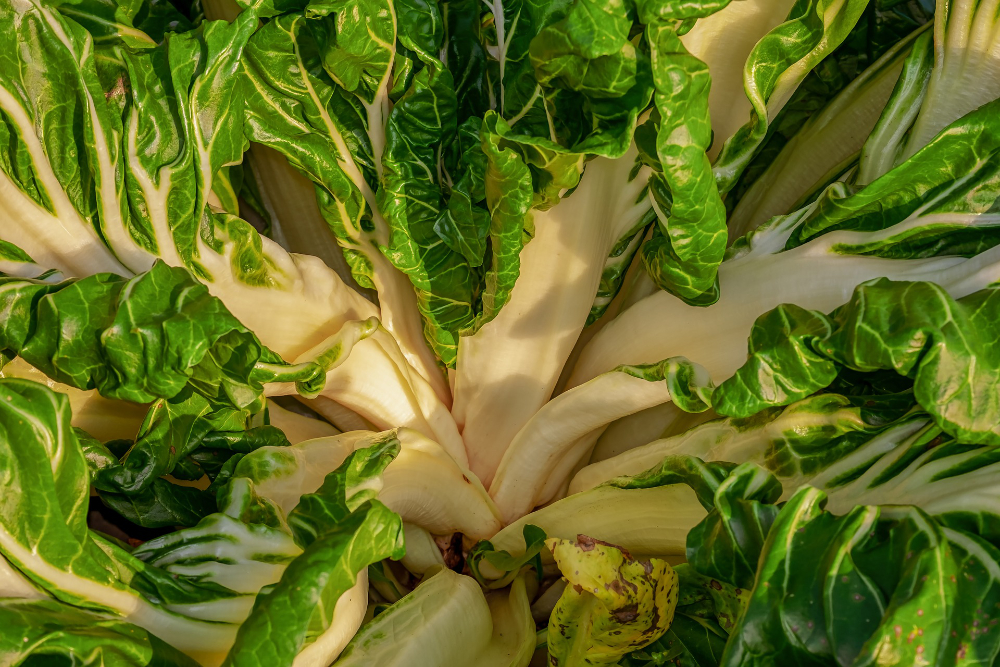
If you notice deficiency symptoms in your plants during the gardening season, you can fertilize them with some compost tea or plant manure. However, if you fertilize your plants sufficiently with compost/manure in the first year, you can usually do without additional fertilization. You don't need to fertilize in the autumn of the second year, as only light feeders will follow in the next season anyway.
3rd Year: Light Feeder as Main Crop
As your bed has now been cultivated for two years without much fertilizer, you should leave it to low-yielding crops in the third year. Even in the third year, a small amount of fertilizer with compost tea or plant manure can help if you feel that your plants need it.
Light Feeder for the Third Year:
- spinach
- lamb's lettuce
- picking lettuce
- radishes and rocket
- bush beans and peas
- herbs such as dill, parsley, coriander, thyme, cress
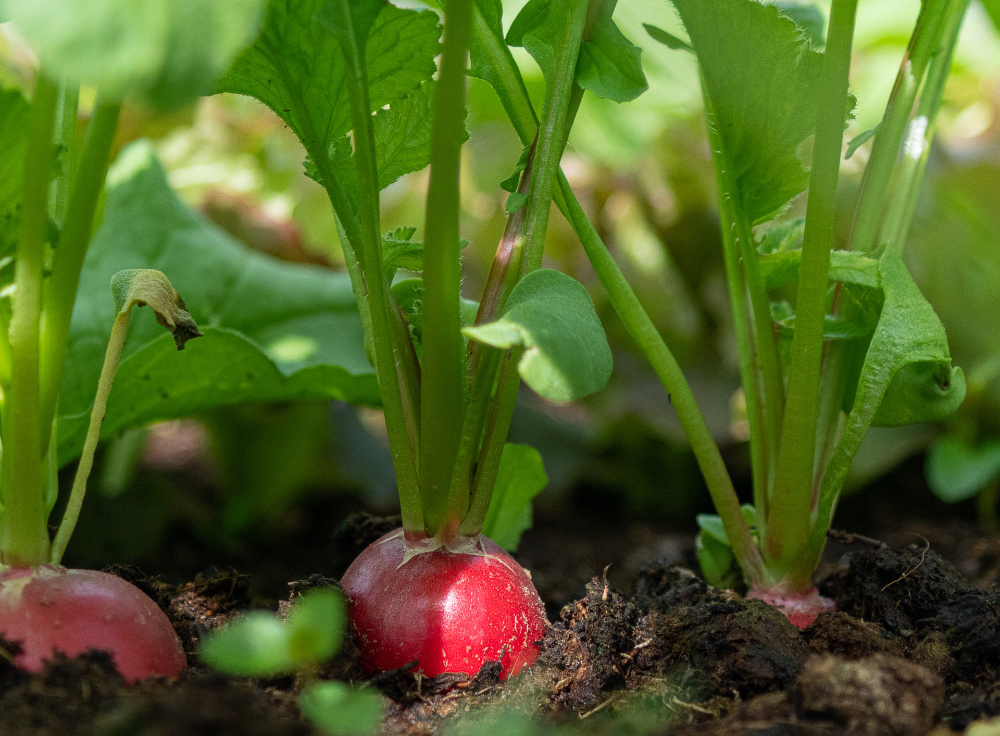
Year 4: Sow Green Manure
After three years of being productive, your bed now deserves a break. To get it ready for the next three years, you should not plant any crops this year, but rather a seed mixture for green manure. You can find out Which Plants Are Suitable as Green Manure and Other Tips in this article.
Examples of Good Green Manure
Legumes (pulses) are particularly suitable for this, as they have the ability to form a symbiotic relationship with so-called "rhizobia". These are bacteria that can convert nitrogen from the air into ammonium, which in turn can be absorbed by the plants. The bacteria live in small nodules on the roots of the legumes, which is why they are also called nodule bacteria. This property makes legumes ideal for restoring your garden's nitrogen balance in a completely natural way. For example, we recommend growing Wick rye, which is a special seed mixture from organic farming that consists partly of vetch seeds and partly of rye seeds. A clover-grass mixture works just as well. Other suitable legumes include alfalfa and lupin, which can also be grown in combinations.
Vetch is a wild legume species native to Europe and is therefore ideally adapted to the climatic conditions. The mixture of legume and rye serves to regulate the carbon to nitrogen ratio. If you were to grow only one legume, a large proportion of the nitrogen would be lost again when the plants compost in the soil. However, if you grow a mixture of a "carbon-heavy" plant such as rye together with a nitrogen fixer such as vetch, the carbon acts as a kind of sponge that absorbs the nitrogen as it decomposes and then gradually releases it back to your crops. It also increases the amount of carbon in the soil, which contributes to a healthier and more resilient soil environment. At the end of the season, cut off the green manure and leave it on the bed as mulch over the winter . This allows the plant residues to be broken down by soil organisms and the fixed nitrogen is made available for other plants.
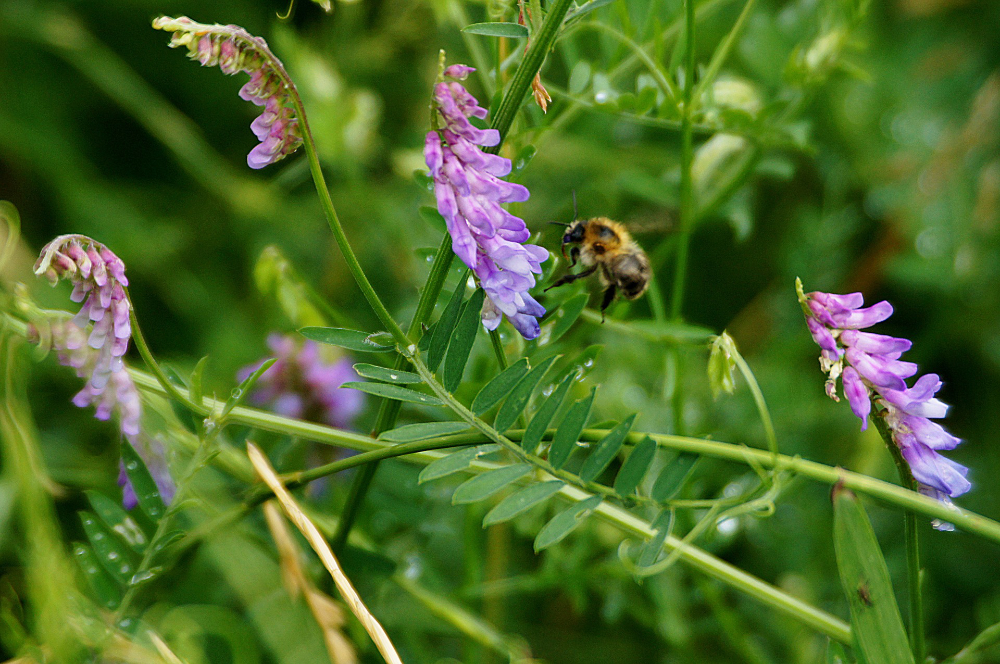
However, green manures are not only useful for enriching the soil with nitrogen. There are also plants from other families that also have good properties as catch crops. They give the soil a rest and protect the fallow land from weed growth during this time. The living plant cover strengthens the soil and prevents silting. The roots of the catch crop also loosen compaction in the soil and contribute to humus enrichment. Lush flowering plants such as phacelia also serve as bee and insect pasture.
Crop Rotation & Succession Planting in Combination
This type of crop rotation is a good way to gradually improve soil fertility, save fertilizer and keep an overview when planning. Crop rotation and succession planting are not mutually exclusive, quite the opposite! They complement each other and together are the best way to ensure healthy garden soil and high yields in the long term. The whole thing is then a kind of box model: the succession plan of a year is packed into the overarching rotation of the crop rotation. We have summarized what this can look like in the table below. If you now also want to switch to a four-year crop rotation, you should start with green manure in order to start with the full dose of fertilizer right away. So first plant a bed with green manure, this will then be the strong crop bed next year. The next year, plant another bed with green manure - and so on until you have the desired number of beds in your rotation.

So basically, it's quite simple: succession planting is primarily about making the most of a growing season. Crop rotation, on the other hand, is a tool to ensure the long-term fertility of your beds. Together, they are your tools for an organic garden with high yields. Even if planning succession planting and crop rotation may seem like an impossible feat of thought at first glance, it's still worth looking into the subject. With the right structure and a little practice, the whole thing becomes child's play after all.
What Is Succession Planting?
Succession planting is the alternation of different crops on a bed within a year. The nutrient requirements of the plants play an important role in planning your garden year. A distinction is made between heavy feeders, medium feeders and light feeders. There are also green manure plants, which are usually not harvested. Green manure contributes to soil health and may enrich the soil with new nutrients (e.g. legumes).
Create a Succession Plan
Of course, ecological aspects also play a role when planning your succession plan, as different crops influence each other and the soil. Some crops help each other, others should not be grown in succession.
In order not to deplete the soil, it is common practice to grow a medium to low-yielding crop (preceding and following crops ) after a high-yielding crop (main crop). A good succession plan therefore not only contributes to a larger harvest, but also to protecting the soil and increasing biodiversity in the garden. You can find all the benefits of crop rotation as well as Instructions on How to Plan a Good Succession Plan in the article.
We hope that we have been able to give you a good overview of the principles of crop rotation and crop rotation. If you have any questions or comments on the topic, please write to us at [email protected]. Follow us on Instagram or Facebook to never miss another article. You can also subscribe directly to our newsletter.
Want to get helpful gardening tips all year round and plan your own beds in the best possible way? Then register here or download the Fryd app for Android or iOS.
Fryd - Your digital bed planner

Jonas
Jonas studied agricultural biology. He discovered his passion for plants and gardening through an internship at a permaculture NGO. Since then, he has been gardening on his balcony and in community gardens.
Learn MoreCurrent Topics in the Community

Liked 2 times
With these photos from my own garden, I would like to draw your attention to a very interesting webinar series that can be found on the naturadb website. Starting this week, there will be an online lecture on an insect species once a month on a Thursday from 6 pm to about 8 pm. It starts with the ants, followed in the order of my photos above: hoverflies, dragonflies, butterflies, wild bees, grasshoppers, beetles, digger wasps, caddisflies and co. and at the end there is one on flower ecology. So if you're interested in getting to know native insect species better and attracting them to your own garden, you're sure to find plenty of inspiration here 😀.
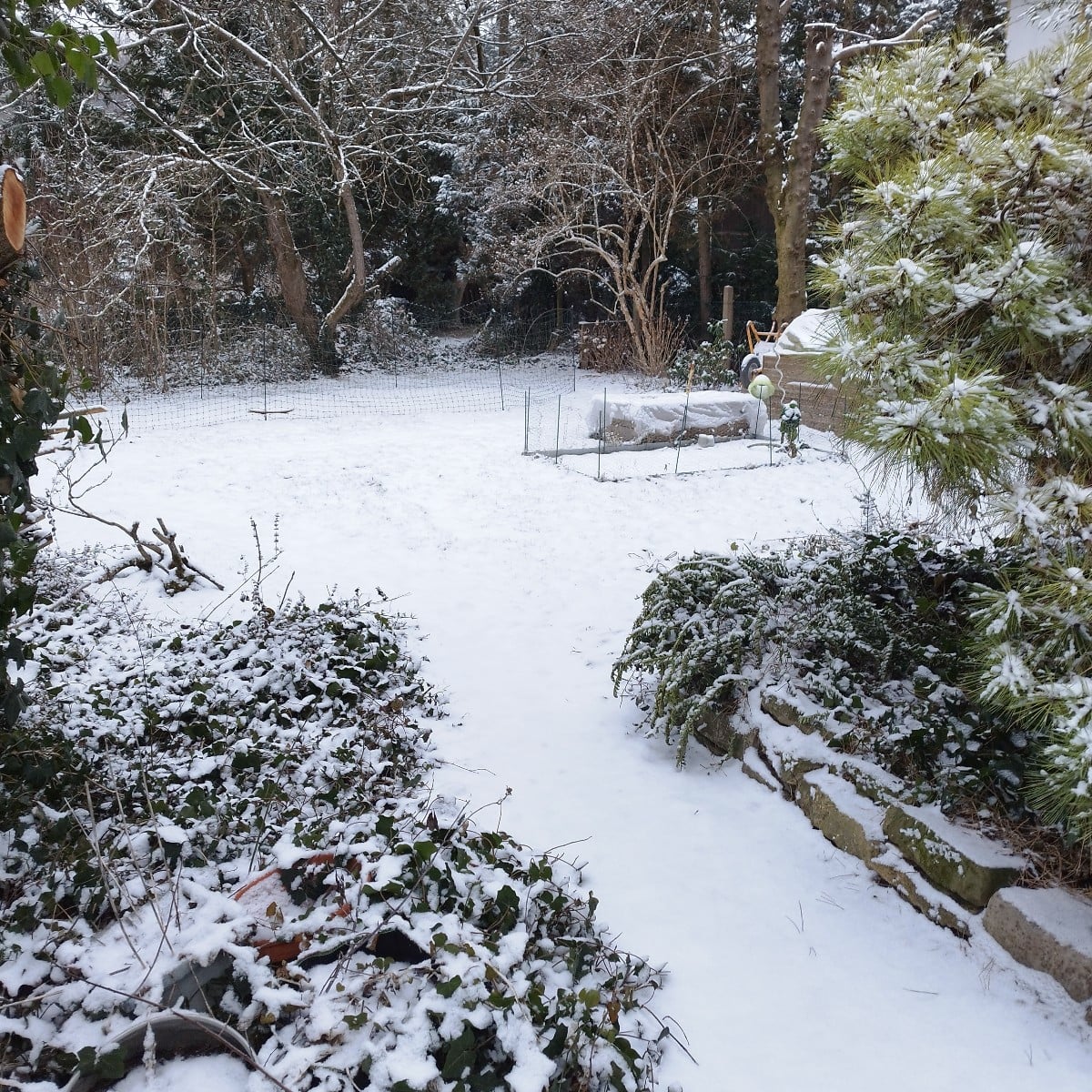
Liked 1 times
Everything is in hibernation... The chickas don't want to know anything about the "funny white stuff" and prefer to stay in the stable.
Show 1 answer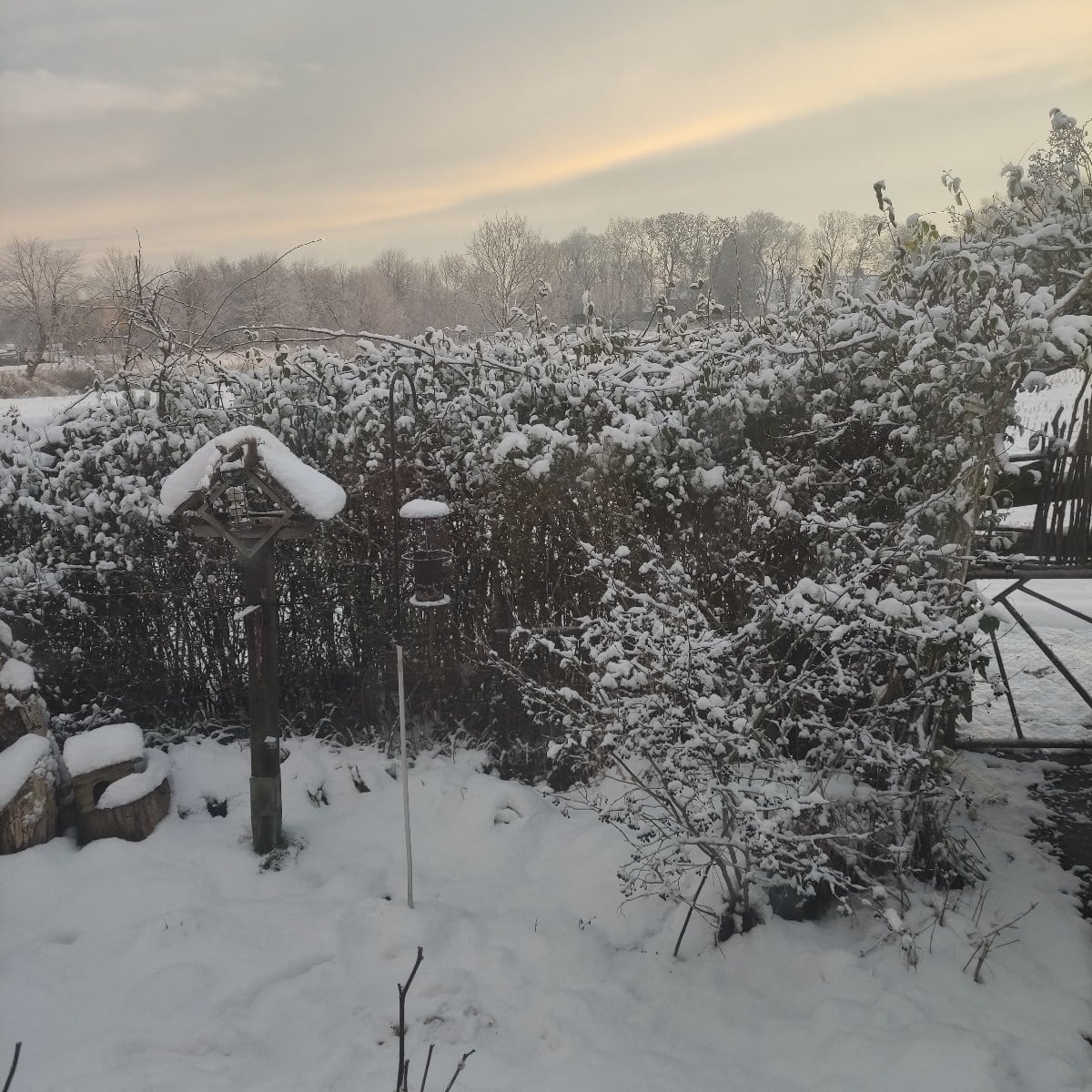
Liked 1 times
More snowfall has been announced. ☃️😵💫
Popular Articles

Overwintering Parsley: How to Do It Successfully

How to Grow Lettuce in Winter: Varieties, Sowing, Harvesting

Growing Sage Plant: Tips for Sowing and Harvesting

What Herbs Can Be Planted Together?

Create & Design a Permaculture Garden

Overwintering Plants: Tubs, Pots and Raised Beds

Pruning, Fertilizing & Propagating Currants: Care Tips

Pruning Raspberries: How to Do It

Vegetable Garden With Greenhouse: How to Use Greenhouse Effect

Winterizing Beds and the Garden: How to Do It
FAQ
Crop rotation refers to the cultivation of different crops on the same bed over several years in order to prevent plant diseases and soil exhaustion.
Why is crop rotation important?
Good crop rotation helps to reduce the spread of specific pests and diseases and keep the soil rich in nutrients.
How do I plan a crop rotation?
Plan the cultivation in a rotation that distributes the strong, medium and weak growers over several years to balance the nutrient balance in the soil.